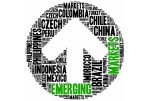Aubrey CM: What do Emerging Markets offer investors?
Aubrey CM: What do Emerging Markets offer investors?

Emerging Markets have long provided investors with an exciting opportunity for successful returns and a portfolio diversifier. Together, they include six billion people, account for half of global economic growth, and are growing at a faster rate than their more developed counterparts.
By John Ewart
However, over the past 10 years, the performance of broad-based emerging market indices has not reflected this opportunity. The composition of an index will change over time, and the last 10 years have witnessed considerable rotation amongst listed companies. China has remained the largest country within the MSCI EM index, but the dominance of state-owned banks and oil companies has given way to IT giants such as Tencent and Alibaba.
The deregulation of industries, and the emergence and rapid growth of e-commerce has resulted in many new companies being listed across the region. These new businesses, with superior financial returns and more attractive growth prospects, have been rewarded with higher valuations and escalating share price performance.
Emerging markets are not homogenous; they include diverse countries at very different stages of economic development. For investors, the structural opportunity is to be found in consumer aspirations (better food, housing, transport, healthcare, education, and entertainment) as they become wealthier and have more disposable income. This trend is identifiable as, at around $ 3,000 GDP per capita, people tend to start eating out (India), at $ 5,000 - $ 10,000 there is better access to financial services (Indonesia), between $ 10,000 and $ 20,000 it is healthcare, retail and cars (Brazil, China), and over $ 30,000 it becomes foreign travel, technology and luxury goods (Korea, Taiwan). As these countries develop, companies that cater to the expanding urban middle class, people with higher education, formal employment opportunities and access to finance, are well-positioned for longterm growth, particularly those operating in countries with pro-business policies.
How the EM consumer makes purchases is also changing. Demand for organised retail space is increasing across India’s largest cities as formal retail gains traction. Access to technology has spurred the growth of e-commerce platforms.
There are over two billion Millennials and Gen Z con- sumers in emerging markets, spurring many companies to emulate the business models so successfully created by Tencent in China, SEA Limited in Southeast Asia or MercadoLibre in Brazil. E-commerce in India is just beginning.
Focusing on the consumer can also offer more predictability of outcomes, which can leverage alpha opportunities. For example, it is much harder to predict the price of oil over the coming year versus the certainty that there will be more motorcycles on the roads of emerging markets. India’s motorcycle and car market continues to attract new customers.
Over the next ten years, one of the overarching themes will be the emergence of India as the third largest economy, and the source of much of the world’s growth. The country is predicted to grow between 6-7% annually over the coming years, with GDP per capita rising to $ 4,000 by 2029, representing a doubling since 2020. It is the secure middle classes that drive spending. The top 40% of the income bracket spends $ 600 billion per year and this is rising by around $ 50 billion per year. Comparing household income with that of China shows there is some way to go.

There is another key factor driving growth in emerging markets: the trade between them. Increasingly integrated and less dependent on the shipment of cheap manufactured goods to developed markets, data shows that from 1995 to 2022, this trade increased at an annual rate of 9.7%. In particular, intraregional trade in Asia is approaching 60% of its total. Intra-Asia FDI is following suit with many companies building regional production capacity for higher-value products. Samsung in Thailand and Vietnam, Suzuki with local partner Maruti in India, and BYD in Indonesia being recent examples.
Chinese electric vehicles (EVs) are gaining traction throughout Southeast Asia because they offer a quality product, are competitively priced, and contain world leading technology. These companies are also building local production capacity, reducing barriers to entry and the impact of crossborder tariffs. China is fast becoming an auto export powerhouse, and companies have ambition beyond the Asian region as new car plants in Eastern Europe enable expansion into the wealthier Western Europe customers.
The last decade has seen an acceleration in the adoption of many products and services that the global population use on a daily basis. The smartphone is an obvious example with Apple Pay, Netflix, Spotify and many other apps now ingrained in consumer behaviour on a daily basis. The technology development is not the preserve of one country, as ‘designed in California, assembled in China’ testifies, and arguably should include ‘by semiconductor chips designed in Korea and made in Taiwan using Dutch equipment’.
TSMC is the global leader in the advanced semiconductor chip production with an estimated share exceeding 90%. Korean SK Hynix has an estimated 70% global market share in the production of high bandwidth memory semi chips, which enable faster processing with less power consumption. And ASML of the Netherlands is the global leader in the design and manufacture of lithography systems for the semiconductor industry.

We may all enjoy the end product, but technology product design, development and manufacture require a complex chain of suppliers, and these companies have developed their leading industry position over decades. The ability to build a competitive moat and sustain industry leadership requires continuous innovation and a balance sheet to support the increasing costs of R&D, as the estimated $ 150 billion cost of the planned TSMC plant in Arizona highlights.
Competition can be prohibitively expensive, and a leading industry player can secure a financially rewarding advantage for many years, which unsurprisingly can be satisfying for investors.
Identifying the dominant player, or the likely contender, is an important component in selecting companies to consider for portfolio inclusion. Established management teams, strong cash generation, and visibility of the revenue and profit outlook are all key factors in our selection process. There are good reasons why a company will grow faster than the broader industry, and why the business has a competitive advantage, hence deserving a higher multiple as the management execute their plan.
We are not looking to invest in the ‘market’. The successful strategy is to adopt an active selection of country and industry allocation, and, importantly, invest in companies that trade at an attractive multiple that reflects the competitive advantage and growth prospects of the company.
The evidence to support this approach has been reflected in the performance of our strategy since inception. The US equity market performance has been impressive and supported by various factors including the growth of the IT Industries in recent years. The EM index and other regional returns may have been limited, but an active management approach has delivered attractive returns for long term investors. A process should evolve to reflect the changing world, but the fundamental investment principles will remain.
|
SUMMARY Emerging markets offer long-term growth, driven by urbanisation, rising incomes, and a young population. Consumer demand across income brackets (food, healthcare, travel) is a key structural opportunity. E-commerce and tech adoption are surging, especially in India and Southeast Asia. Intra-EM trade and local manufacturing are expanding rapidly. Active stock selection targeting strong, dominant companies outperforms passive EM indices. India is poised to become a major global growth engine this decade. |









